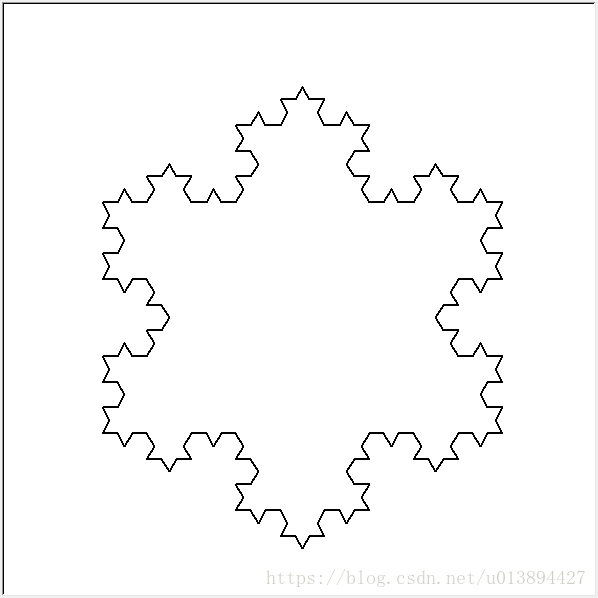Python 使用类写装饰器的小技巧
最近学到了一个有趣的装饰器写法,就记录一下。
装饰器是一个返回函数的函数。写一个装饰器,除了最常见的在函数中定义函数以外,Python还允许使用类来定义一个装饰器。
1、用类写装饰器
下面用常见的写法实现了一个缓存装饰器。
def cache(func):
data = {}
def wrapper(*args, **kwargs):
key = f'{func.__name__}-{str(args)}-{str(kwargs)})'
if key in data:
result = data.get(key)
print('cached')
else:
result = func(*args, **kwargs)
data[key] = result
print('calculated')
return result
return wrapper
看看缓存的效果。
@cache def rectangle_area(length, width): return length * width rectangle_area(2, 3) # calculated # 6 rectangle_area(2, 3) # cached # 6
装饰器的@cache是一个语法糖,相当于func = cache(func),如果这里的cache不是一个函数,而是一个类又会怎样呢?定义一个类class Cache, 那么调用func = Cache(func)会得到一个对象,这时返回的func其实是Cache的对象。定义__call__方法可以将类的实例变成可调用对象,可以像调用函数一样调用对象。然后在__call__方法里调用原本的func函数就能实现装饰器了。所以Cache类也能当作装饰器使用,并且能以@Cache的形式使用。
接下来把cache函数改写为Cache类:
class Cache:
def __init__(self, func):
self.func = func
self.data = {}
def __call__(self, *args, **kwargs):
func = self.func
data = self.data
key = f'{func.__name__}-{str(args)}-{str(kwargs)})'
if key in data:
result = data.get(key)
print('cached')
else:
result = func(*args, **kwargs)
data[key] = result
print('calculated')
return result
再看看缓存结果,效果一样。
@Cache def rectangle_area(length, width): return length * width rectangle_area(2, 3) # calculated # 6 rectangle_area(2, 3) # cached # 6
2、装饰类的方法
装饰器不止能装饰函数,也经常用来装饰类的方法,但是我发现用类写的装饰器不能直接用在装饰类的方法上。(有点绕…)
先看看函数写的装饰器如何装饰类的方法。
class Rectangle:
def __init__(self, length, width):
self.length = length
self.width = width
@cache
def area(self):
return self.length * self.width
r = Rectangle(2, 3)
r.area()
# calculated
# 6
r.area()
# cached
# 6
但是如果直接换成Cache类会报错,这个错误的原因是area被装饰后变成了类的一个属性,而不是方法。
class Rectangle:
def __init__(self, length, width):
self.length = length
self.width = width
@Cache
def area(self):
return self.length * self.width
r = Rectangle(2, 3)
r.area()
# TypeError: area() missing 1 required positional argument: 'self'
Rectangle.area
# <__main__.Cache object at 0x0000012D8E7A6D30>
r.area
# <__main__.Cache object at 0x0000012D8E7A6D30>
回头再来看看没有装饰器的情况,Python在实例化对象后把函数变成了方法。
class Rectangle:
def __init__(self, length, width):
self.length = length
self.width = width
def area(self):
return self.length * self.width
Rectangle.area
# <function Rectangle.area at 0x0000012D8E7B28C8>
r = Rectangle(2, 3)
r.area
# <bound method Rectangle.area of <__main__.Rectangle object
因此解决办法很简单,要用类写的装饰器来装饰类的方法,只需要把可调用对象包装成函数就行。
# 定义一个简单的装饰器,什么也不做,仅仅是把可调用对象包装成函数
def method(call):
def wrapper(*args, **kwargs):
return call(*args, **kwargs)
return wrapper
class Rectangle:
def __init__(self, length, width):
self.length = length
self.width = width
@method
@Cache
def area(self):
return self.length * self.width
r = Rectangle(2, 3)
r.area()
# calculated
# 6
r.area()
# cached
# 6
或者用@property还能直接把方法变成属性。
class Rectangle:
def __init__(self, length, width):
self.length = length
self.width = width
@property
@Cache
def area(self):
return self.length * self.width
r = Rectangle(2, 3)
r.area
# calculated
# 6
r.area
# cached
# 6
总结
用类写装饰器并非什么特别的技巧,一般情况下确实没必要这么写,不过这样就可以用一些类的特性来写装饰器,比如类的继承,也算是提供了另一种思路吧。


